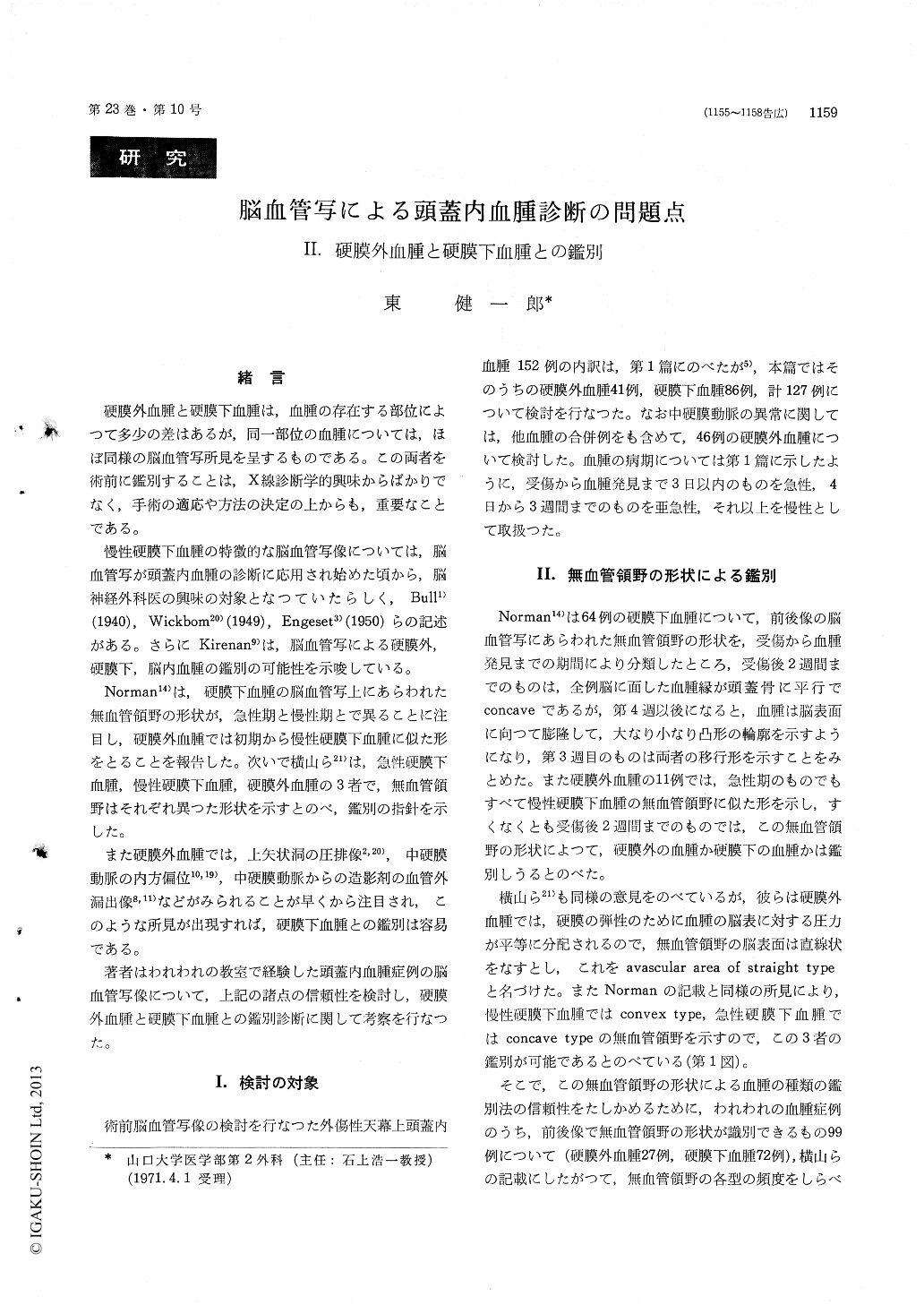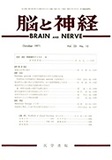Japanese
English
- 有料閲覧
- Abstract 文献概要
- 1ページ目 Look Inside
緒言
硬膜外血腫と硬膜下血腫は,血腫の存在する部位によつて多少の差はあるが,同一部位の血腫については,ほぼ同様の脳血管写所見を呈するものである。この両者を術前に鑑別することは,X線診断学的興味からばかりでなく,手術の適応や方法の決定の上からも,重要なことである。
慢性硬膜下血腫の特徴的な脳血管写像については,脳血管写が頭蓋内血腫の診断に応用され始めた頃から,脳神経外科医の興味の対象となつていたらしく,Bull1)(1940),Wickbom20)(1949),Engeset3)(1950)らの記述がある。さらにKirenan9)は,脳血管写による硬膜外,硬膜下,脳内血腫の鑑別の可能性を示唆している。
In the surgical management of traumatic intra-cranial extracerebral hematomas, preoperative diffetiation between extradural and subdual hema-tomas helps surgery considerably.
In this connection, the shape of avascular space appearing on the anteroposterior cerebral angiogram has been given attention as a useful index for differential diagnosis.
Yokoyama & Huang reported that the angio-graphic appearance of extradual hematoma is characterized by a straight line of the inner bound-ary of the hematoma?avascular area of straight type-,because clot formed upon the dura corn-presses cortical surface evenly. On the other hand, chronic subdural hematoma appears as a convex-lens shaped avascular space-convex type-beause of its encapsulated property. They also believed that these are easily differentiated from acute subdural hematoma which shows a crescent tyse of avas-cular area-concave type-on the A-P angiogram, as Norman pointed out.
Cerebral angiograms of 99 patients with trauma-tic intracranial hematomas were analyzed for the purpose of evaluation of reliability of the above theory.
In the result, although in the majorty of acute subdural hematomas avascular area of a crescent type was verified on the A-P angiogram, in extra-dural hematoma only 50% showed avascular area of straight type. The rate of appearance of the avascular area of convex type was also less than 50% in the chronic subdural hematoma.
This result indicates that the shape of avascular space may not be so useful sign for differentiation between extradural and subdural hematoma except for acute stage.
Changes of the middle meningeal artery have also been referred as the reliable sign for differentia-tion. If medial displacement of the middle meninge-al artery or extravasation of contrast media from this artery is shown on angiogram, it can be safely diagnosed that the hematoma is extradural.
In our series of 46 cases in which common carotid angiography was done preoperatively, medial dis-placement of the middle meningeal artery was found in 59%. Extravasation of contrast media from this artery was shown in 30% of the cases. In 2 cases, pseudoaneurysm of the middle meningeal artery was demonstrated on angiogram.
Although these characteristic appearances of the meningeal artery may not be universal sign be-cause of their low incidence, they serve as a reliable clue in the aniograpic diagnosis of extradural hematoma if present.
Therefore, puncture of the common carotid artery at the time of angiographic examination is advisable in the cases of suspected intracranial hematoma, and careful scrutiny of the course of the middle meningeal artery of angiograms is neceassary.

Copyright © 1971, Igaku-Shoin Ltd. All rights reserved.


